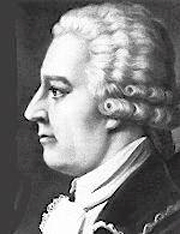Trivia
Contrabass masterpieces: Concertos
Although pieces first began to be written for the solo contrabass at the end of the 17th century, there are few opportunities even today for contrabassists to really show off during solos. In this section we'll take a historic look focusing on the use of the contrabass as a solo instrument in the works of composers in and around Vienna in the second half of the 18th century, as well as pieces written by contrabassists in the 19th and 20th centuries.
C.D.v. Dittersdorf: Contrabass Concerto in D Major
Dittersdorf (1739-1799) was an orchestra composer of the same generation as Haydn, who maintained a friendly relationship with Mozart. In the 1760s Dittersdorf served as "chapel master" in the town of Groswardein (currently Oradea, Romania), which was a part of the Austrian Empire at the time. Dittersdorf composed this contrabass concerto for Johannes Matthias Sperger, a famous court contrabassist. Many famous contrabassists other than Sperger rose to prominence in Austria afterwards, and many composers wrote concertos that are still extant today. These pieces were written to be played in a special tuning called "Viennese tuning" (in which some strings are tuned in thirds and others in fourths), and Dittersdorf's concertos use techniques that were the first to demonstrate the effect of tuning instruments in this way.

C.D.v. Dittersdorf (1739-1799)
G. Bottesini: Double Contrabass Concerto in D Major
Giovanni Bottesini (1821-1889) is one of the most well-known contrabassists from the 19th century. He was also a famous opera conductor, and he conducted the first performance of Verdi's "Aida." As a composer, Bottesini of course studied Verdi in some depth, and his concertos were therefore strongly influenced by Italian operas by Valdi and others. In addition to gorgeous passages that demonstrate unmatched technique, his "Double Contrabass Concerto in D Major" also features majestic melodies that sound much like opera arias.
S. Koussevitzky: Contrabass Concerto in F-sharp Minor
Serge Koussevitzky (1874-1951) was a Russian-born American conductor. Although he is well-known as a conductor who supported the American music world during the first half of the 20th century (for example, he served as conductor of the Boston Symphony Orchestra for 25 years, starting in 1924), he began his career as a contrabassist. He wrote several solo contrabass works for his own performances, but his most famous work is likely a contrabass concerto that was first performed in Moscow in 1905. However, the piano accompaniment was written by his friend, composer Reinhold Moritzevich Gliere, and the orchestration was handled by Wolfgang Meyer-Tormin. This means that Koussevitzky composed only the solo parts. The concerto is played without stopping from the first through third movements. The first movement and the third movement (which reproduces music from the first movement) feature strikingly virtuoso passages that truly demonstrate Koussevitzky's masterful performing ability. The second movement features rolling melodies reminiscent of Russian folk music, played on the contrabass. A strong argument can be made that this masterpiece is the first piece of music to evoke Russian tradition since Tchaikovsky's work.
Musical Instrument Guide : Violin Contents
Origins
Structure
How to Play
How the Instrument is Made
Choosing an Instrument
Care and Maintenance
Trivia
- The f-hole used to be a C-hole or S-hole
- Why the f-hole?
- Violinists must bow to the horse
- Steel strings or gut strings? That is the question
- Is the chinrest the unsung hero of the violin?
- Most violin varnishes are also medicines
- Violin masterpieces: Solos I
- Violin masterpieces: Solos II
- Violin masterpieces: Solos III
- Violin masterpieces: Concertos I
- Violin masterpieces: Concertos II
- Viola masterpieces: Chamber music
- Viola masterpieces: Concertos
- Cello masterpieces: Concertos I
- Cello masterpieces: Concertos II
- Cello masterpieces: Solos
- Contrabass masterpieces: Concertos
- Contrabass masterpieces: Chamber music
- Orchestral masterpieces featuring the contrabass
- What do you call the part on the bow that you hold?
